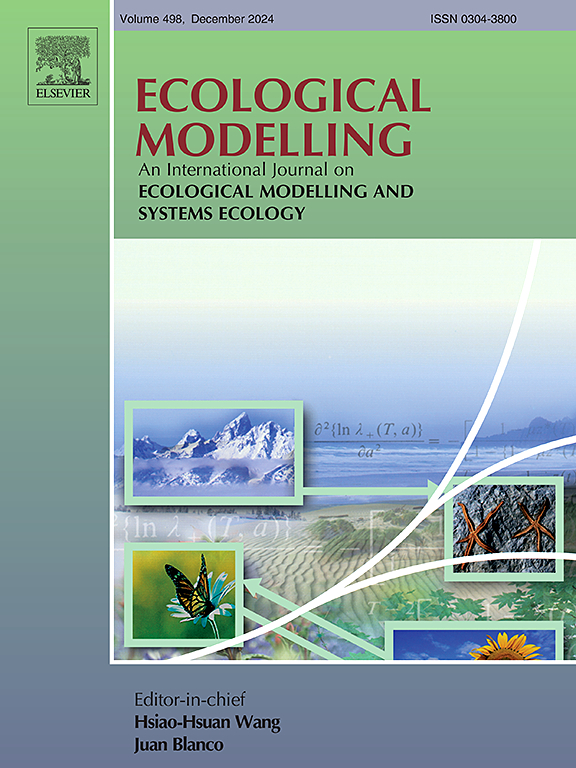Simulating biotic disturbance responses in forests requires a balance of model performance, complexity, and accessibility
IF 2.6
3区 环境科学与生态学
Q2 ECOLOGY
引用次数: 0
Abstract
Biotic disturbances, i.e. ecosystem perturbations driven by insects and pathogens, are distinct from abiotic events in their duration, severity, and variable effects on carbon (C) pools and fluxes. Because of these factors and their interactions with climate, biotic disturbances present a substantial challenge to ecosystem modelers attempting to balance model complexity, accessibility, and realism. Here we share our recent experience with model-data fusion experiments as part of the Forest Resilience Threshold Experiment (FoRTE), using both a very simple and a highly complex model to simulate ecologically complex biotic disturbance responses. In this Viewpoint, our goals are to (1) synthesize our experiences with both models, weighing model complexity-process specificity trade-offs, and (2) suggest three priorities for future efforts to improve ecosystem modeling of biotic disturbance impacts to the terrestrial C cycle.
模拟森林生物干扰反应需要模型性能、复杂性和可及性之间的平衡
生物扰动,即由昆虫和病原体引起的生态系统扰动,在其持续时间、严重程度以及对碳(C)库和通量的可变影响方面不同于非生物事件。由于这些因素及其与气候的相互作用,生物干扰对试图平衡模型复杂性、可及性和真实性的生态系统建模者提出了重大挑战。在这里,我们分享了我们最近在模型数据融合实验方面的经验,作为森林恢复阈值实验(FoRTE)的一部分,使用非常简单和高度复杂的模型来模拟生态复杂的生物干扰反应。在这一观点中,我们的目标是(1)综合我们在这两个模型上的经验,权衡模型复杂性和过程特异性之间的权衡,以及(2)提出未来努力改进生物干扰对陆地C循环影响的生态系统建模的三个优先事项。
本文章由计算机程序翻译,如有差异,请以英文原文为准。
求助全文
约1分钟内获得全文
求助全文
来源期刊

Ecological Modelling
环境科学-生态学
CiteScore
5.60
自引率
6.50%
发文量
259
审稿时长
69 days
期刊介绍:
The journal is concerned with the use of mathematical models and systems analysis for the description of ecological processes and for the sustainable management of resources. Human activity and well-being are dependent on and integrated with the functioning of ecosystems and the services they provide. We aim to understand these basic ecosystem functions using mathematical and conceptual modelling, systems analysis, thermodynamics, computer simulations, and ecological theory. This leads to a preference for process-based models embedded in theory with explicit causative agents as opposed to strictly statistical or correlative descriptions. These modelling methods can be applied to a wide spectrum of issues ranging from basic ecology to human ecology to socio-ecological systems. The journal welcomes research articles, short communications, review articles, letters to the editor, book reviews, and other communications. The journal also supports the activities of the [International Society of Ecological Modelling (ISEM)](http://www.isemna.org/).
 求助内容:
求助内容: 应助结果提醒方式:
应助结果提醒方式:


